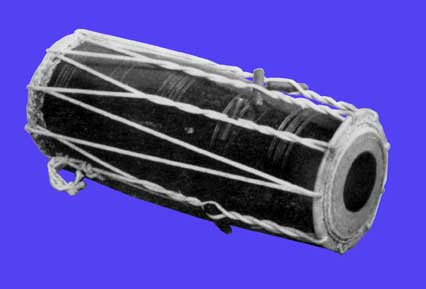
Dholki, also called nal, is a popular drum in many lighter forms of music.
It has an interesting construction. The body consists of a barrel shaped shell. The left side resembles the bayan (large metal drum of the tabla), except that it uses dholak masala (oil based application) on the inner surface instead of a syahi (permanent black spot). The right head is unique in its construction. Goat-skin is stitched onto an iron ring. In the centre of this skin is a syahi, similar to tabla except much thinner. The traditional nals were laced with rope and had sticks to function as turnbuckles. Today, metal turnbuckles have replaced the rope lacing in most models.
The nal is very popular in a variety of situations. It was especially popular in the tamasha (street performance) of Maharashtra. From there it was absorbed into the Hindi film industry and is very popular in filmi music. It is found in folk music, especially in Western India, as well as geet, and bhajan.
There is often some confusion concerning the term “dholki”, because this term literally means, “a small dholak”; as such, the term is often used for smaller dholaks that structurally are dissimilar to the nal.